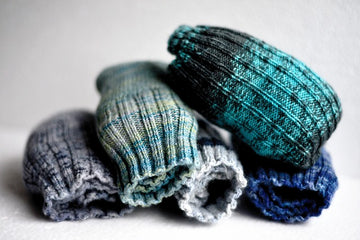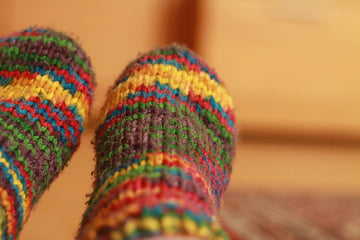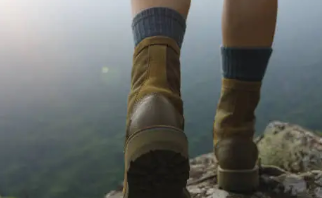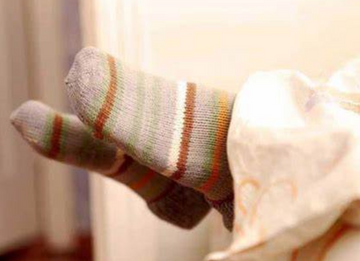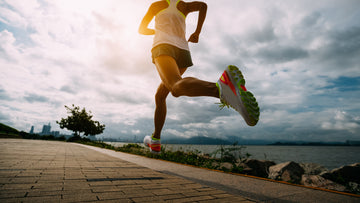
Picking the right running socks is super important for how well you run and how comfy you feel. They are a must-have for your running gear! Whether you’re running on the road, exploring trails, or using a treadmill, having the right socks can make your run way better. By knowing what to look for and picking socks that match your running style, you can boost your comfort and performance.
What type of socks is best for running?
Picking the right running socks is super important for how well you perform and how comfy you feel. Let’s dive into some key features and materials to think about.
Best Material for Running Socks
- Merino Wool: This is perfect for anyone looking for a natural material that keeps your feet at the right temperature. Merino wool helps your feet stay cool when it’s hot and warm when it’s cold. Plus, it naturally wicks away moisture and fights bacteria, making it a fantastic choice for both short and long runs. It helps reduce smells and keeps your feet feeling good.
- Polyester and Nylon: These man-made materials are great at pulling moisture away from your skin, which keeps your feet dry. They’re also tough and usually cheaper than merino wool. You can find them in different thicknesses and cushioning levels, so they work well for all kinds of running.
- LYCRA®: This material is famous for being stretchy, which helps socks fit snugly and move with your foot. It’s often found in compression socks that give support and help with recovery. LYCRA® helps the socks keep their shape and fit, even after you wear them a lot.
Sock Features
- No-Seam Design: These socks are made without seams to stop irritation and blisters, which can happen with regular seams. Choose socks that have flat or low-profile seams for comfort.
- Compression Socks: These socks apply pressure to help blood flow and support muscle recovery. They are great for long-distance runners or anyone healing from an injury.
- Trail Running Socks: If you run on trails, look for socks that have extra padding, strong heels and toes, and sometimes even built-in gaiters to keep dirt out. Trail socks are usually made from tougher materials to handle rough paths.
- Odor Control: Socks that have special materials to fight bacteria or are treated to resist odors can keep your feet smelling nice, even after a long run.
- Anti-blister: Features like extra padding in areas that wear out quickly, materials that reduce friction, or special blends that minimize rubbing can help stop blisters from forming.
- Ankle Support: Some socks come with built-in ankle protection to help prevent injuries from rocks or branches when running on uneven ground.
- Arch Support: Socks with arch support can ease foot strain and give extra stability, which is especially helpful for long runs or for people with specific foot arch problems.
- Quick Drying: It's important to have socks that dry fast after getting wet to stay comfortable and avoid chafing and blisters. Look for socks that wick moisture away and dry quickly.
- Thickness and Padding: The thickness and padding of socks depend on what you like and the type of running you do. Thicker socks give more cushioning, which is good for long distances or rough trails, while thinner socks are more breathable and feel lighter.
Picking the Right Socks for Your Running Style
- Road Running: For road running, you should choose lightweight and breathable socks that can wick away moisture. Look for socks that have a bit of cushioning and are seamless to avoid any irritation.
- Trail Running: If you're hitting the trails, go for socks that have extra cushioning and are made from tough materials. Some might even have built-in gaiters or ankle support to help protect your feet on rough paths.
- Track Running: When you're on the track, thin and lightweight socks are the way to go. They should have great moisture-wicking abilities and very little padding since speed is super important.
- Treadmill Running: While running on a treadmill, breathable and moisture-wicking socks are still key, but you might want to focus more on comfort and cushioning since the treadmill is easier on your feet compared to outdoor surfaces.
- Cold Weather Running: For running in the cold, look for socks made from Merino wool or synthetic blends that keep your feet warm and dry.
By choosing the right features in your running socks based on your needs and the conditions, you can improve your comfort, performance, and foot health.
Are thick or thin running socks better?
Thick running socks have a lot of benefits, especially when it comes to cushioning and absorbing impact.
These socks have extra padding that helps soak up the shock with every step you take. This extra cushioning can lessen the strain on your joints and muscles, making them perfect for long runs or activities that involve a lot of jumping.
The added thickness can make your feet feel more comfortable, especially if they are sensitive or get tired easily. The soft feel of thick socks can make running a lot more enjoyable and less harsh on your feet.
Thick socks do a better job of protecting your feet from blisters and sore spots. The extra layer helps reduce friction and rubbing, which are often the main reasons for getting blisters.
When it’s cold outside, thick socks keep your feet warm, which is great for running in chilly weather. They help keep your feet cozy and insulated.
Usually, thicker socks last longer and can handle more wear and tear, making them ideal for rough trails or longer runs.
For runners who care about cushioning and comfort, thick running socks are an excellent option. Just remember, they might be too warm for hot days or not as breathable, so think about the weather and what you like when picking the right thickness.
Do compression socks really help running?
Compression socks are really helpful for runners and athletes. They work by applying different levels of pressure, which helps blood flow and can make muscles feel less tired. This better blood circulation might help reduce soreness and stiffness after long runs by getting rid of waste products and bringing fresh oxygen to the muscles. Plus, they can help with swelling in the legs and feet, especially when running for a long time or standing for too long.
Also, compression socks can support the muscles and cut down on vibrations, which might help prevent injuries from straining or overusing muscles. Many runners say that wearing these socks during their workouts or races gives them better support and helps them feel less tired, which could improve their performance. After running, they can help with recovery by managing swelling and speeding up muscle repair, keeping the muscles warm and supported.
There are different kinds of compression, like graduated compression, which is tighter at the ankle and gets looser towards the knee, and uniform compression, which has the same pressure all over. How well compression socks work can vary from person to person and also depends on the quality of the socks, so it’s a good idea to try them out to see if they suit you. It’s important that they fit well; they should be snug but not too tight to be comfortable and get the most benefits. Overall, while compression socks can be really useful, they work best when combined with other running and recovery methods.
How often should I replace my running socks?
It's a good idea to change your running socks every six months or after you've run about 300 to 500 miles, whichever happens first. Make sure to look at your socks often for any signs of damage, like holes, thinning fabric, fading colors, or if they don't stretch as well anymore. If you see any of these problems, it's best to buy a new pair so you can keep running comfortably and perform your best.
Should running socks be tight or loose?
When it comes to running, it's important to wear socks that fit well. They should be snug enough to stay put while you move, but not so tight that they squeeze your feet. A good fit helps keep the socks from bunching up or slipping down, which can be really annoying. Plus, when your socks fit right, they give your feet better support and can help stop blisters and discomfort by reducing friction. Just remember, they should feel comfortable and not cut off your circulation!
Should you wear 2 pairs of socks when running?
Wearing two pairs of socks while you run can be a smart way to cut down on friction and stop blisters from forming. The main idea is that the rubbing happens between the two socks instead of against your skin. This can really help lessen irritation and lower the chances of getting blisters.
But if you decide to wear two pairs, make sure your shoes still feel good. If they feel too tight with the extra socks, you might need to go up half a size. This way, your feet won’t move around too much in the shoes, which could lead to new blister problems. The trick is to find a good balance between extra protection and a comfy fit to keep you feeling good while you run.
Are long or short socks better for running?
When it comes to running, it's usually a good idea to wear crew-length socks or even longer ones instead of short socks. Short socks can leave parts of your feet, like your heels and ankles, unprotected, which might lead to friction and blisters. Longer socks act as a shield, reducing the rubbing between your skin and shoes. They also keep dirt and small stuff from getting inside your shoes and give extra support and cushioning around your ankles. In short, wearing crew-length or longer socks can make your run more comfortable and help prevent blisters and other foot problems.
Is polyester or cotton better for running socks?
For running, polyester socks are generally a better option than cotton. While cotton is soft and may be ideal for those with sensitive skin or allergies, it doesn't manage moisture well. Cotton tends to absorb sweat and retain moisture, which can lead to chafing, blisters, and discomfort during exercise.
Polyester, on the other hand, is a synthetic fabric that excels at wicking moisture away from your skin, keeping your feet dry and reducing the risk of blisters and irritation. It also dries quickly and maintains its shape and support better than cotton. For running or any strenuous activity where moisture management and comfort are key, polyester or blends that include polyester are typically more effective.
Best Crew Socks for Running

Best Compression Socks for Running

Shop Compression Socks For Running
Best Ankle Socks for Running

Best Jacquard Socks for Running

Shop Jacquard Socks For Running




